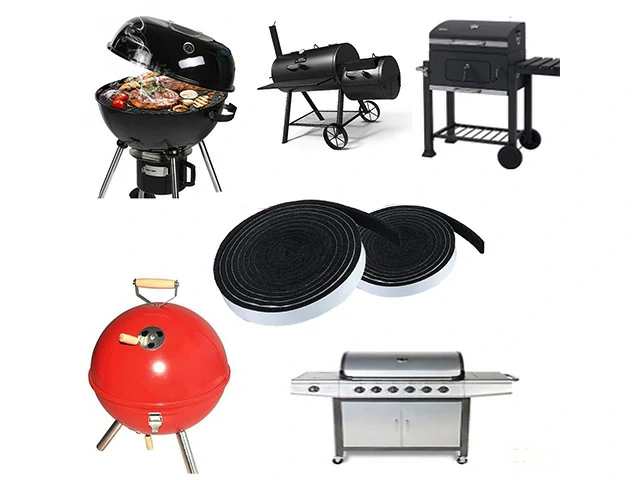BBQ Sealing Tape Failure: A Technical In-depth Analysis
BBQ sealing tape is a must-have material for sealing smoker lids and doors. However, users often report failures such as adhesive breakage, sealing tape peeling, tearing, and heat-induced degradation. Below, we analyze this issue to understand the technical root causes, real-world cases, and possible solutions to prevent failures.

1. Adhesive and Tape Failure: The Real Failure Causes
Failures are generally divided into two categories:
Adhesive failure: The tape tends to peel off the stove surface.
Sealing tape material failure: The felt or ceramic sealing tape itself deteriorates.
Typically "When it comes to 'gasket failure,' there are really two issues: felt failure and/or adhesive failure."
Users report that gasket adhesives often "melt" or lose their stickiness when exposed to high temperatures above their ratings for cooking:
> "I applied the seal... got it to 600°F... and the gasket just fell off."
2. Common Situations and User Feedback
a. Kamado-Style Grills
Poor initial adhesion: Reddit users describe cases where the adhesive failed soon after the first cooking. Some people solved this problem by sanding down the exposed ceramic, cleaning it with alcohol, and then applying Permatex high-temperature RTV silicone—which was then left to cure overnight before cooking.
Temporary use during pressure cooking: Some people avoid immediate repairs and instead lean against the lid to secure the gasket during family gatherings.
b. Offset and Pellet Smokers
High-Temperature Silicone vs. Gasket Tape: One Amazon review states that gasket tape is better for sealing door gaps, while RTV silicone is better for sealing cracks and ill-fitting seams
Failure Causes: Professional Analysis
1. Adhesive Thermal Overload
Tape backings may be heat resistant, but adhesives (especially rubber/pressure sensitive adhesives) typically soften or lose adhesion above 550°F (~290°C).
2. Inadequate Surface Preparation
Contaminants such as soot, grease, or ceramic dust can reduce bond strength. When preparing the surface, always use light abrasion and alcohol cleaning.
3. Wrong Materials or Application Methods
Self-adhesive felt gaskets, Nomex tapes, and ceramic-backed tapes have different tolerance and thickness characteristics—choose the right tape for your grill model and temperature profile.
4. Mechanical stress
Repeated opening of the lid, shear forces or compression forces will gradually shorten the life of the gasket.
Prevention & Best Practices
| Step | Action | Why it Matters |
| 1. Choose | Use Nomex or ceramic-backed tape rated ≥700 °F for kamado grills; fiberglass/ceramic composites for offsets | Higher temp tolerance = longer life |
| 2. Strip and prep surface | Clean off old gasket, sand to bare material, clean with isopropyl alcohol | Ensures optimal adhesive bonding |
| 3. Apply high-temp adhesive | Use Permatex ultra‑high temp RTV or equivalent; apply to lid/body, position gasket, clamp overnight | Adhesive melts fill micron gaps, cures for resilient bond |
| 4. Cure before cooking | Allow 12–24 hours cure at ambient conditions | Fully sets adhesive to heal under heat |
| 5. First cook low/med temp | Run at 350–400 °F for 1–2 hours to condition the gasket | Helps seating without stress |
| 6. Periodic inspection | Check adhesion and gasket condition every 6–12 months | Prevent issues before next big cookout |
Final Takeaway
BBQ gasket tape failures stem from misuse more than product defects. Preventative steps include:
• Selecting the right gasket material,
• Performing meticulous surface prep,
• Using proper high-temperature adhesives,
• Allowing for full curing,
• Conducting trial runs before heavy duty use,
• And maintaining routine inspections.
For serious BBQ enthusiasts, a complete re-gasketing protocol should involve:
(1) Surface cleanup → (2) Correct adhesive → (3) Gasket installation → (4) Controlled curing → (5) Dry-run cooking → (6) Preventative inspections.
Keyword:
BBQ Sealing Tape,BBQ Sealing Tape Failure
RELATED NEWS


